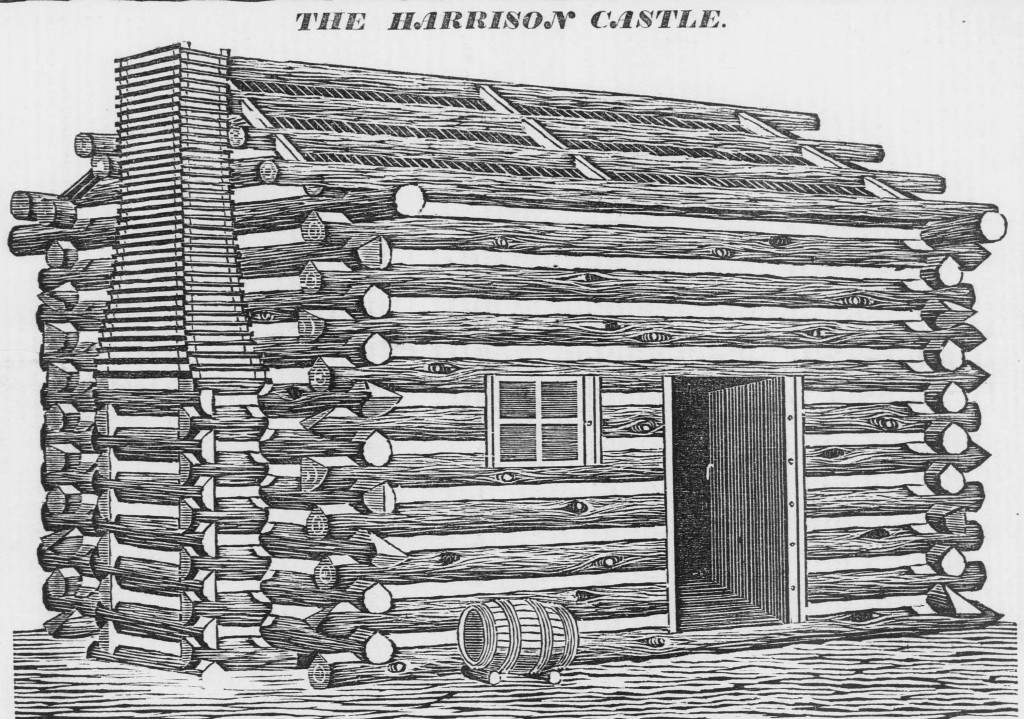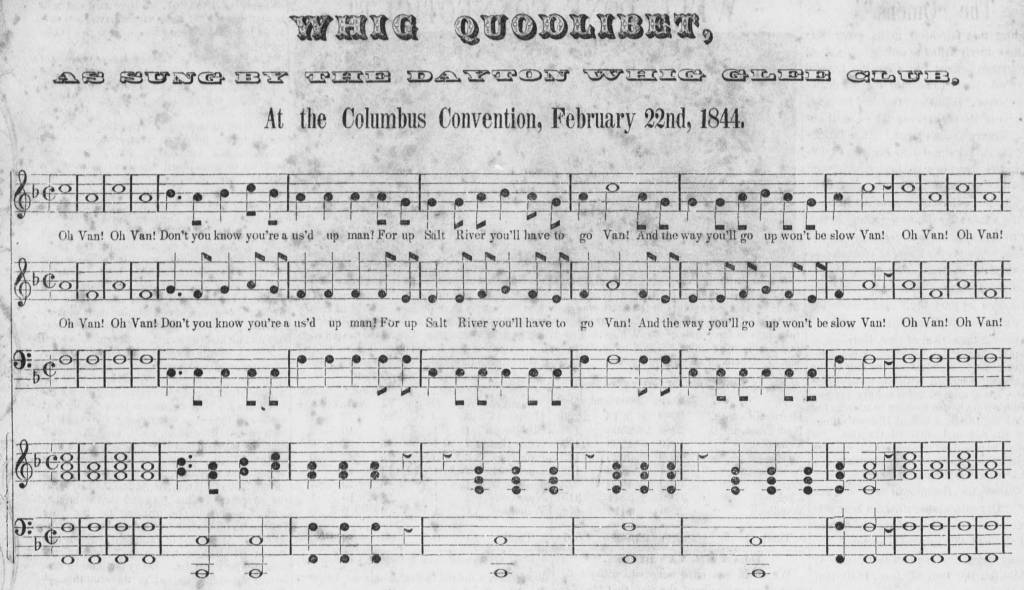Log Cabins, Raccoons and Presidential Elections

During each election season, we are inundated with yard signs, bumper stickers, commercials, websites, news reports and flyers that implore us to support or oppose a particular candidate or issue. Ohioans will be seeing more and more of this campaign material as November 4th draws nearer, because we will be electing several important officials this year: all 16 seats in the U.S. House of Representatives are up for election, as are all 99 in the Ohio House of Representatives and 17 of the 33 in the Ohio Senate. Ohioans will also be electing their governor/lieutenant governor, secretary of state, attorney general, treasurer and auditor!

Among the myriad forms of election propaganda that can be used to sway our votes, one that we probably won’t see this year had its heyday in the 19th century–the campaign newspaper. These often inflammatory publications were published with the sole purpose of supporting a candidate or officially-nominated ticket and lasted only during the campaign period. They sought to rally support for their politicians of choice by emphasizing the benefits of their candidates and party platforms and attacking those of the opposition. Through a variety of content—ranging from campaign songs and poetry to speeches to illustrations—each of these papers clearly stated whothe better candidate was and did not shy away from harsh criticism of their challengers. One of Ohio Memory’s newest collections, 1840s Campaign Newspapers, brings to you five of these newspapers, documenting the three presidential elections of the 1840s. The growth of political sectionalism, economic turmoil resulting from the Panic of 1837, the country’s westward expansion and the controversial topic of slavery during this time all led to fierce political rivalries.
The Log Cabin, from Dayton, Ohio, was published from March to October 1840. It supported Whig candidate William Henry Harrison who defeated the Democratic incumbent, Martin Van Buren. Harrison was not only the first Ohioan to serve as president of the United States, he was also the first president to actively campaign for office. Along with employing the slogan “Tippecanoe and Tyler Too,” he was called “the log cabin and hard cider candidate.” This “common man” image helped him win the election against Van Buren, who was often blamed for the nation’s economic crisis and was accused of being out of touch with the people by his Whig detractors. The front page of the June 13, 1840, issue features a full page drawing of “The Harrison Castle”: a log cabin, with a barrel of what is likely full of hard cider.
That Same Old Coon, also from Dayton, Ohio, was published from April to November 1844. This Whig paper supported candidate Henry Clay, whose nickname “Ol’ Coon” was intended to give him rustic appeal and reference his Kentucky roots, echoing Harrison’s “Log Cabin” campaign of 1840. Along with editorials and articles, this paper also included sheet music for a campaign song, the “Whig Quodlibet.”

In opposition to that paper were the Ohio Coon Catcher, from Columbus, Ohio, published from August to November 1844, and theCoon Dissector, from Dayton, Ohio, published from May to November 1844. These papers supported Democratic candidate James K. Polk, who ultimately won the election. Both feature raccoon illustrations which emphasized their goal of defeating Henry Clay.
The final paper in this collection is the Reserve Battery, from Cleveland, Ohio, which was published from July to November 1848. This paper supported Whig candidate Zachary Taylor, a hero from the Mexican-American War, who beat his Democratic opponent, Lewis Cass, by only 36 electoral votes. A lengthy biography detailing “old Zack’s wonderful career thus far” was printed in the second issue of this paper, lauding his military accomplishments, his “brave soul” and “humane heart.”
Once the election season ended, these papers would print election results, celebrate their political party’s victories, lament their losses and then disappear altogether. Though short-lived and extremely biased, these newspapers enhance our understanding of our past presidential election campaigns, offering insight not always found in history books. They reveal how potential voters were exposed to the pros and cons of each party platform and the tactics used by publishers and political parties to drive home their political agendas. If you want to learn more about these papers, and experience firsthand what voters some 170 years ago were reading as they made their electoral decisions, be sure to check out our 1840s Campaign Newspapers!
Further Reading: Miles, W. (ed.). (1987). The people’s voice: An annotated bibliography of American presidential campaign newspapers, 1828-1984. Westport, CT: Greenwood press.
______________________________________________________________________________________
Thanks to Jenni Salamon, Coordinator for the Ohio Digital Newspaper Program, for this week’s post!



Leave a Reply
You must be logged in to post a comment.